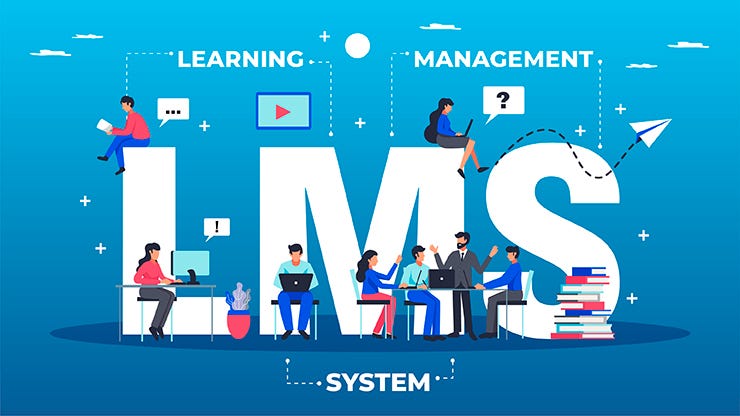Choosing the right Learning Management System (LMS) is essential for educational institutions and nonprofit organizations seeking a secure, user-friendly online learning environment. An LMS serves as a centralized hub where instructors, learners, and administrators interact, share resources, and track progress. To ensure your platform aligns with learning objectives and compliance needs, follow this LMS selection checklist. It guides you from defining requirements through implementation, covering critical areas like functionality, integration, security, and support.
Define Objectives & Requirements:
Start by identifying your organization’s goals and learner needs. Determine who will use the system (students, volunteers, staff, etc.) and what outcomes you expect (training, certification, course completion). Estimate current and future user volumes – for example, an LMS that works for 50 learners today should scale to hundreds or more as your program grows. Document requirements like compliance (e.g. FERPA for schools, GDPR for international donors), content scope, and success metrics before evaluating solutions. This foundation ensures you select an LMS that truly supports your mission and scales with growth.
1. Choose Off-the-Shelf vs. Custom LMS
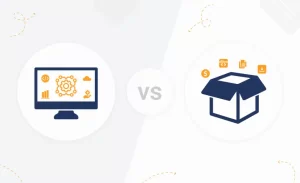
- Off-the-Shelf: Prebuilt LMS platforms can be deployed quickly and cost-effectively. They often include basic course creation, user management, and reporting features out of the box. However, off-the-shelf solutions may lack the flexibility to meet unique educational or nonprofit workflows, and customization options can be limited.
- Custom LMS Development: A custom-built LMS offers full control over features and branding. For example, Nliven’s custom LMS development services provide tailored user roles, workflow alignment, and integration capabilities (Custom LMS Development | Scalable & Secure Solutions). Custom platforms can embed your organization’s branding and accommodate specialized requirements (like custom certification paths or unique assessment types). Importantly, they support secure, scalable architectures (AES-256 encryption, SSO) and compliance with regulations (FERPA, HIPAA, GDPR) by design. If you need a platform precisely tuned for schools or nonprofit operations, a custom LMS is often the better choice.
- Key Decision Factors: Weigh the total cost and timeline against your needs. Off-the-shelf LMS may suffice for standard training programs, but a custom LMS lets you expand features (e.g. unique content types or integration with donor databases) without compromise. Consider a mix: start with a configurable platform and plan for customization as needs evolve.
2. Evaluate Core Features and User Experience
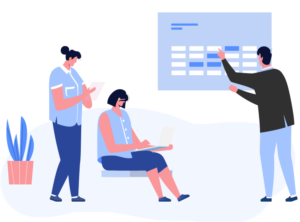
- Ease of Use: Choose an LMS with an intuitive interface. Instructors and learners should be able to navigate courses, upload content, and complete training without a steep learning curve. Look for drag-and-drop course builders and clear dashboards. An LMS that’s easy on both educators and students boosts adoption and reduces support overhead.
- Multi-Format Content Support: Ensure the LMS handles diverse content types – videos, audio, PDFs, and interactive elements like quizzes and simulations. Support for industry standards (SCORM, xAPI) lets you import or export courses between systems. This flexibility is important for educational curricula and nonprofit training programs that rely on a mix of media.
- Engagement Tools: Interactive features keep learners motivated. Check for discussion forums, gamification badges, and live session capability. The LMS should integrate with video conferencing tools (Zoom, Teams, Google Meet) to support real-time classes and webinars. Personalization features (adaptive learning paths) help tailor the experience to individual users.
- Assessments & Certification: The platform must include varied assessment tools: quizzes, exams, surveys, and assignments. It should provide rubrics for consistent grading and enable auto-generated certificates to recognize completion or compliance training. Analytics dashboards should report on learner progress, completion rates, and assessment outcomes so you can measure effectiveness.
- Accessibility & Localization: For K–12 schools and nonprofits serving diverse audiences, confirm the LMS meets accessibility standards (WCAG/ADA). Ensure content and navigation are usable by people with disabilities (screen-reader support, captions). If needed, the LMS should allow multilingual content and interfaces to reach global volunteers or international students.
3. Plan Integrations and Automation
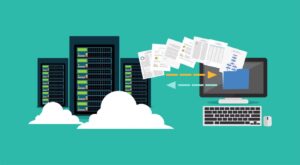
- Systems Integration: A modern LMS should connect with your existing tools. Look for LMS integration services (APIs or built-in connectors) that link to Student Information Systems (SIS), Customer Relationship Management (CRM) platforms, and payment gateways (Virtual Learning Solutions – Nliven Technologies Pvt. Ltd.) (LMS Integrations & Automation | Streamline Workflows). For example, syncing with an SIS or Salesforce CRM can automatically enroll users based on courses or donations. Integrations save time and reduce errors by automating data flow between systems.
- Automation Workflows: Automate routine tasks wherever possible. Integrate enrollment or user provisioning so that when a user is added in your HR or membership system, they automatically gain LMS access (Virtual Learning Solutions – Nliven Technologies Pvt. Ltd.). Automate license or certification tracking with calendar and email systems to remind learners of renewals. Tools like Nliven’s LMS Integrations & Automation service connect your LMS to NetSuite, Salesforce, payment gateways, Google Classroom, Zoom, and more to streamline these processes.
- Single Sign-On (SSO): Support SSO (SAML, OAuth) to let users log in with existing organization credentials. This improves security and user convenience.
- Data Sync: Ensure real-time synchronization of records. Whether it’s course completions or new user accounts, data should flow seamlessly so reporting is accurate across platforms.
4. Ensure Security and Compliance
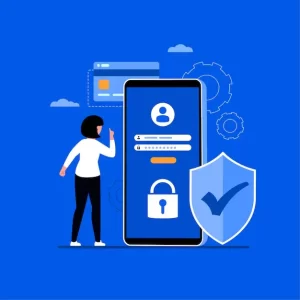
- Data Encryption & Access Control: Protect student and user data with enterprise-grade security. The LMS should store data encrypted (AES-256 or similar) and secure data in transit (HTTPS/SSL). Use multi-factor authentication and robust password policies. For example, Nliven’s custom LMS solutions implement encryption and single sign-on to safeguard information. With 62% of education organizations having experienced data breaches in recent years, encryption and strict access restrictions are non-negotiable.
- Privacy Regulations: Comply with relevant laws. Educational LMS platforms must meet FERPA requirements by keeping education records confidential. This means limiting access to authorized personnel and encrypting records (Data Privacy in Custom LMS Compliance with FERPA GDPR | MoldStud). Nonprofits with EU users must adhere to GDPR (clear consent, data transparency). Establish privacy policies that inform users how data is collected and used. (Government guidance notes that breaches can violate FERPA and harm students, so preventive measures are critical.)
- Regular Audits and Updates: Security is an ongoing process. Conduct periodic audits of your LMS to check for vulnerabilities and patch software promptly. Update the system to address new threats. Investing in regular training for admins on compliance protocols is also wise, as many issues arise from human error.
- Secure Assessments: If the LMS supports high-stakes testing, use proctoring solutions. For example, tools like LockDown Browser or DigiExam can restrict access during exams and prevent cheating, integrating seamlessly with the LMS. Automated grading and certificate issuance enhance trust in online qualifications.
5. Implementation, Training, and Support

- Pilot Testing: Before full launch, run a pilot with a small group of users. Use their feedback to refine course content and workflows. Troubleshoot any technical issues in this controlled environment. This ensures a smoother rollout to your broader audience.
- User Training: Provide hands-on training and resources for administrators, instructors, and learners. Prepare documentation and quick-start guides that explain how to use the LMS features. Skilled trainers or help videos can dramatically improve adoption and satisfaction.
- Ongoing Support: Establish a helpdesk or support channel. Whether internal or via a vendor, ensure timely support for issues. Track support tickets to identify common problems. Regularly review system usage and performance metrics to spot drop-offs or bottlenecks.
- Maintenance & Updates: Plan for continuous maintenance. Keep software and plugins updated. Monitor system health, backups, and scalability. As your organization’s needs evolve, revisit your LMS features and add enhancements. Gathering user feedback after launch will guide iterative improvements.
| Aspect | Checklist Item |
| Goals & Requirements | Define clear learning objectives, audience, and growth plans. Estimate users and future scalability needs. |
| Customization | Decide on off-the-shelf vs. custom. A custom LMS allows unique branding, workflows, and data ownership ([Custom LMS Development |
| Content Support | Ensure support for multimedia (video/audio) and standards (SCORM/xAPI) for versatile course delivery. |
| User Experience | Choose an intuitive, mobile-friendly interface. Include engagement tools like forums, quizzes, and gamification . |
| Integration | Verify LMS integration services for SIS/CRM (Salesforce, NetSuite), calendars, and payment systems. |
| Security & Compliance | Implement encryption, SSO, role-based access. Ensure FERPA/GDPR compliance and regular security audits ([Data Privacy in Custom LMS Compliance with FERPA GDPR |
| Scalability | Select a platform that can grow (e.g., support hundreds to thousands of users) without performance loss ([Custom LMS Development |
| Training & Support | Provide comprehensive training for users. Ensure vendor or IT support is available for troubleshooting (LMS Selection Checklist.docx). |
| Cost & Licensing | Evaluate total cost of ownership (development, hosting, licensing). Look for transparent pricing and nonprofit discounts Choosing the Best LMS for Nonprofits: A Comprehensive Guide |

Partnering with expert developers can streamline these steps. Nliven’s LMS development services cover everything from needs analysis through launch, delivering secure, fully integrated platforms that meet education and nonprofit needs. Contact Nliven for custom LMS solutions and integration support to ensure your organization gets the right learning platform at the right time.
Key Takeaways for Nliven’s LMS Services
- Strategic Planning: A thorough LMS selection checklist aligns the platform with your educational or nonprofit goals. Define audience, objectives, and expected scale up front.
- Customization & Branding: A custom LMS for schools and nonprofits delivers flexible user roles, branded interfaces, and built-in compliance (FERPA/GDPR). Nliven’s custom development ensures your workflows are fully supported.
- Integration & Automation: Leverage LMS integration services to link your system with key tools (ERP/CRM, Google Classroom, payment gateways). This automates enrollments, license tracking, and data synchronization.
- Content & Accessibility: Ensure the LMS supports multi-format content (video, SCORM/xAPI) and collaborative tools. Built-in quizzes and certificates keep users engaged and certified.
- Security & Compliance: Build secure online learning platforms with AES-256 encryption, SSO, and regular security audits. Protect sensitive learner data and maintain FERPA/GDPR compliance to build trust.
- Expert Support: Partnering with Nliven means 24/7 support, training, and continuous improvement. Our LMS development services deliver scalable, secure solutions tailored for education and nonprofits. Contact us to ensure your LMS is built right from day one.

